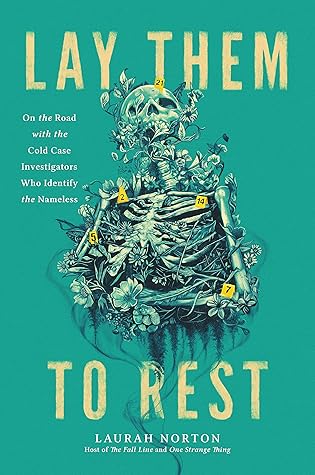More on this book
Community
Kindle Notes & Highlights
Started reading
June 11, 2024
I began to recognize a thorough skeletal analysis when I saw one. Amy also taught me that her field, biological anthropology, and its application to forensic science, was far from static. Anthropologists continually refine and redefine and reform their opinions, and that has a lot of implications for these kinds of criminal investigations. For example, if a skeleton was recovered and examined in 1986 but not identified, it should be regularly revisited. That was Amy’s view, at least, and one she was pushing to make a norm. New technology might be able to reveal new clues about who this person
...more
never officially reported missing but found all the same. They became the bags of bones along highways. At borders. Under bridges. Across state lines, on the routes that truckers favor. You don’t always get the answers you’re seeking, but sometimes you realize you need to take a step back so you can move on to the next search and work on how to address the most ignored or underfunded cases: decedents at the Southern border; the unidentified, unhoused, stolen ancestral remains lying in museum collections; the unmarked graves of Native children at residential schools; boxes of bones sitting on
...more
There’s a clear connection between missing people and unidentified people, and those 2008 findings correlate with what we know today. The Black and Missing Foundation pointed out in late 2022, “40% of the missing-persons reported in 2021 were persons of color.”2 And though Black women made up only 13 percent of the population in 2020, “a third of the almost 300,000 U.S. girls and women reported missing in 2020 were Black.”3 That seems to line up with the findings of the 2008 study: Regarding prevalence among the unidentified, when race was recorded, “the Black male rate was 1.9 times the white
...more
That’s never going to be a precise count due to a number of factors: uncertain information about the deceased, how case information is entered by law enforcement, and how racial categories are assessed and assigned—and even the actual number of deceased in the United States versus what’s represented in the database. In 2022, NamUs listed approximately fourteen thousand unidentified decedents—a number far below the estimated forty thousand in the United States. I’ve yet to find an update on that figure from 2007, besides one estimate that it could be as high as sixty thousand; forty thousand is
...more
We go back to NamUs’s numbers and reports because it is the official, national system devoted to missing and unidentified persons. Its purpose is, per the National Institute of Justice, to serve as a “national information clearinghouse and resource center for missing, unidentified, and unclaimed person cases throughout the United States.”4 An entry for a Doe case in NamUs might include as little as a short description and a contact number, and as much as a detailed write-up, full dental records, case photos, information as to DNA availability, and more. What can be accessed depends on the
...more
This highlight has been truncated due to consecutive passage length restrictions.
Our freedom of information laws and public access are practically transparent compared with, say, those of the UK or Australia. Plus, we aren’t limited to official federal, state, county, and city databases; all the information that is released through those channels and the press allows for Doe Network to exist. It also fuels other essential Doe research sites, like Charley Project, the most comprehensive citizen-run database for cold cases, and Unidentified Wiki, an online encyclopedia of unidentified decedents. In Doe cases, this web of volunteer websites is vital for research.


